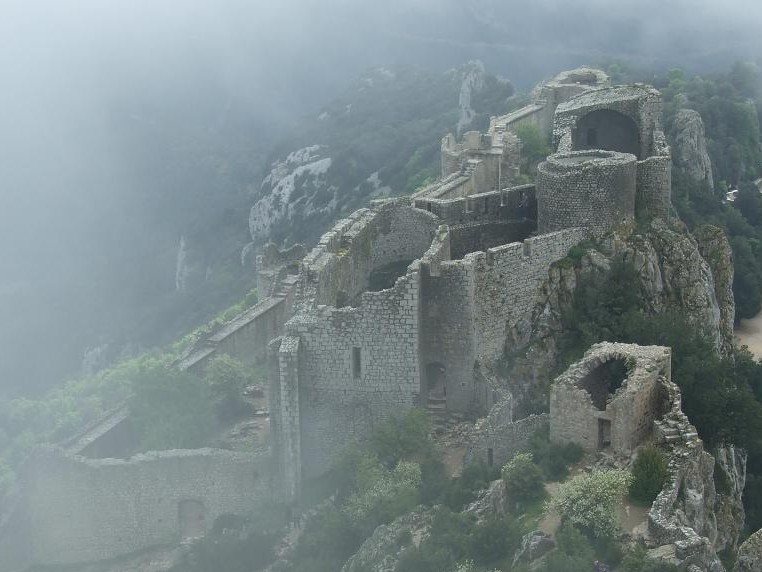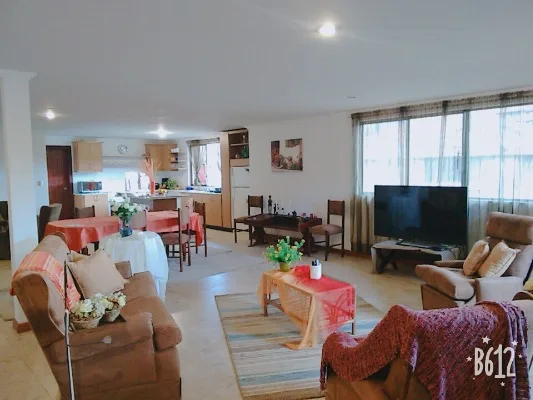The Languedoc: From Cathars to Cassoulet
By Giovanni Cambizaca
The last time I was in France, I stayed in a small village in the Haute Garonne, midway between Toulouse and the Pyrenees. One morning, I had an early start to take some friends to catch a train in Narbonne, and on the way back I decided to visit the Cathar castle at Peyrepertuse, soaring out of the landscape on a precipitous ridge in the Corbieres mountains. It was a foggy morning and it was still early when I finished driving up the winding road to the fortress. Of course, it was closed, but not well secured, so I decided to explore it on my own.
It was a foggy morning and it was still early when I finished driving up the winding road to the fortress. Of course, it was closed, but not well secured, so I decided to explore it on my own.
The Cathars originated in 11th century France in the city of Albi in the Languedoc. Their central belief was in the existence of two gods, one good, one evil, and this placed them in opposition to the implacably monotheistic Catholic church, which persecuted the Cathars relentlessly. The persecution culminated with the Albigensian Crusade of 1209-1229, during which the Cathars were fatally weakened. The fanaticism of the church was demonstrated at the siege of Béziers, where the commander was asked how his troops should distinguish Catholic from Cathar, “Kill them all,” he replied. “The Lord will recognize His own.” Reportedly, more than 7,000 men, women, and children were killed at Béziers by the Catholic forces.

The Cathar castle at Peyrepertuse.
With this history in mind I entered the castle of Peyrepertuse, making my way carefully over the worn stones, slick with mist. To be there in silence, alone, the wind-quickened fog alternately revealing and hiding the ancient architecture of war was to be in another time. How easy to imagine the Cathars huddled there, isolated as much by their beliefs as by the granite walls; secure, but ever watchful for the enemy gathering at the base of their refuge.
A few days later I visited the fortress of Montségur, where the Cathars made their final stand. On 16 March 1244, after 9 months of siege, the remaining 200 Cathars left the castle and went down to the place where wood for a pyre had been erected. No stakes were needed, they mounted the pyre and perished voluntarily in the flames, giving simultaneous testimony to the depth of their belief and humanity’s capacity for cruelty. I recall that for my visit it was a beautiful autumn day, cool, but with the sun on my back as I climbed to the later fortress that now occupies the site. At the foot of the hill, on the Field of the Burned, I encountered a small memorial “Als catars, als martirs del pur amor crestian. 16 de març 1244″, which translates from the Occitan language as “The Cathars, martyrs of pure Christian love. 16 March 1244”.
One hundred years on, violence still stalked the Languedoc, although this time it was political. The Hundred Years War, the interminable conflict between France and England for the French throne, was just getting underway, and in 1356, Edward The Black Prince of Wales laid siege to the French citadel of Castelnaudary. Eventually, with supplies dwindling, the citizens pooled their resources – some beans, a few scraps of meat, pieces of local sausage – hoping to give their soldiers sufficient strength to repel the English. They failed, and Edward pillaged Castelnaudary. But Languedoc’s signature dish, cassoulet, had been created, which was more important in the long run.
Cassoulet is a dish that arouses strange passions in the Languedoc. Prosper Montagné, a proud native of the region and co-author of the first Larousse Gastronomique, wrote that “Cassoulet is the God of Occitan cuisine. A God in three persons: God the Father is the cassoulet of Castelnaudary, God the Son is that of Carcassonne, and the Holy Spirit is that of Toulouse.” Montagné wrote in Larousse that Castelnaudary cassoulet uses a piece of ham and various cuts of pork, Carcassonne adds a leg of mutton and a partridge, while Toulouse instead uses duck or goose confit and some pieces of fresh Toulouse pork sausage. It’s this last version that we would most recognize as cassoulet.
Coming to the present day, the Grande Confrèrie du Cassoulet de Castelnaudary and the Académie Universelle du Cassoulet are gastronomic clubs whose members don medieval robes, listen to long-winded speeches, and make drunken pledges to remain faithful to their favorite version. André Daguin, for many years the chef-patron of the Hotel de France in Auch, said, “Cassoulet isn’t a dish, it’s a war between villages.” Making cassoulet is pretty much a three-day labor of love, so I don’t think I’ll give you a recipe. Instead, I’ll close with this anecdote about Madame Adolphine, a famous Castelnaudary cook, who was asked to prepare a cassoulet for later that day, “A cassoulet for this evening?’ she replied imperiously, “Where do you think you are? In Paris, where all dishes are ready to serve?”
Te enviamos us abrazo Giovanni, Maria Eliza y toda la familia Le Petit


















